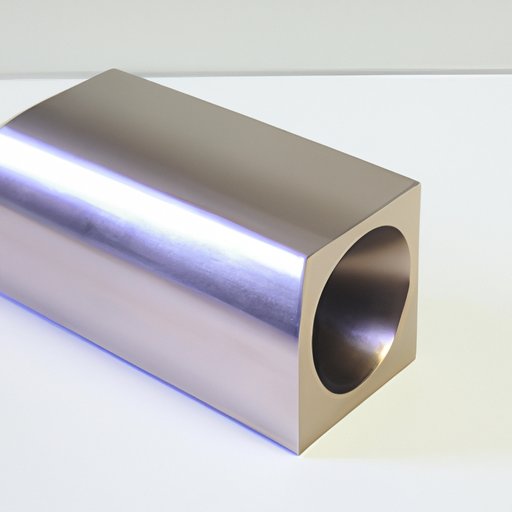Introduction
Aluminum bronze is a type of alloy that combines copper and aluminum. It has excellent mechanical properties, making it suitable for a variety of industrial applications. Aluminum bronze is known for its strength, durability, and corrosion resistance, making it a popular choice in the manufacturing industry.
Overview of Aluminum Bronze and Its Applications
Aluminum bronze is available in a wide range of alloys, each with different properties. The most common alloys are C95500, C95400, C95200, and C95600. These alloys are used in a variety of applications, from valves and fittings to pumps, marine components, and fasteners.

How to Choose the Right Aluminum Bronze Alloy for Your Project
When selecting an aluminum bronze alloy for your project, there are several factors to consider. The first is the application – what will the alloy be used for? The second is the environment – will the alloy be exposed to extreme temperatures, humidity, or other corrosive elements? Finally, you should consider the desired properties of the alloy – do you need high strength, good wear resistance, or excellent electrical conductivity?
Common alloys used for specific applications include C95200 for valves and fittings, C95400 for pumps, and C95600 for marine components. Each alloy has its own unique set of properties, so it’s important to select the right one for your project.
Aluminum Bronze: Its Uses in the Marine Industry
Aluminum bronze is an ideal material for use in the marine industry due to its excellent corrosion resistance. It is also highly resistant to salt water and can withstand the rigors of constant exposure to moisture. In addition, aluminum bronze has excellent heat transfer properties, making it ideal for marine equipment such as propellers, shafts, and bearings.

Aluminum Bronze: Properties and Characteristics
Aluminum bronze alloys have a number of physical and chemical properties that make them well-suited for industrial applications. Physically, they are strong and ductile, and they can be easily formed into complex shapes. They also have excellent wear resistance and good electrical conductivity. Chemically, they are resistant to corrosion, oxidation, and other environmental factors.

Aluminum Bronze: A Guide to Welding and Machining
Aluminum bronze can be joined using a variety of welding techniques, including gas tungsten arc welding (GTAW), shielded metal arc welding (SMAW), and oxyacetylene welding. When welding aluminum bronze, special precautions must be taken to prevent cracking and other defects. It is also important to use the proper filler material and preheat the base metal before welding.
Machining aluminum bronze requires special tools and techniques to ensure a smooth finish. It is important to use sharp cutting tools and lubricants to reduce friction and heat during machining. To prevent tool wear, it is also important to use the correct cutting speeds and feed rates.
Conclusion
Aluminum bronze is a versatile alloy that offers excellent mechanical properties and corrosion resistance. It is used in a variety of applications, from valves and fittings to marine components and fasteners. When selecting an aluminum bronze alloy for your project, it is important to consider the application, environment, and desired properties. Additionally, special care must be taken when welding and machining aluminum bronze to ensure a quality result.

